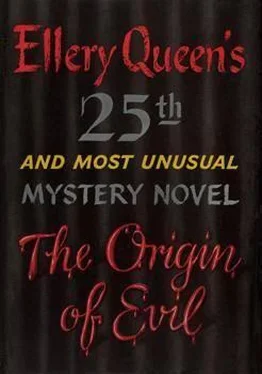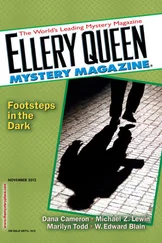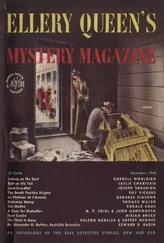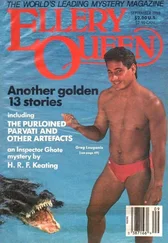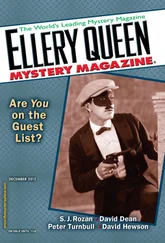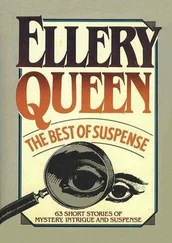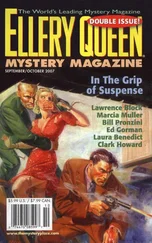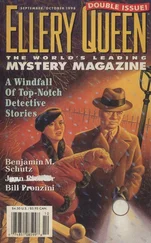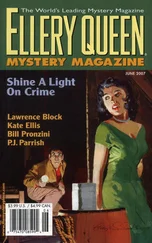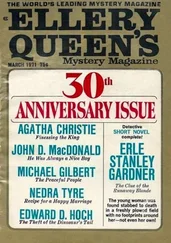He raised a glass of whisky to his mouth.
“Something that looked like a dead eel.”
Had Ellery said, “Something that looked like a live unicorn,” Priam could not have reacted more violently. He jerked against the tray and most of the whisky sprayed out on his beard. He spluttered, swiping at himself.
As far as Keats could see, the others were merely bewildered. Even Wallace dropped his smile, although he quickly picked it up and put it on again.
“I was convinced from practically the outset,” Ellery went on, “that these ‘warnings’ ― to use the language of the original note to Hill ― were interconnected; separate but integral parts of an all-over pattern. And they are. The pattern is fantastic ― for instance, even now I’m sure Lieutenant Keats still suspects what Hollywood calls a weenie. But fantastic or not, it exists; and the job I set myself was to figure out what it was. And now that I’ve figured it out, it doesn’t seem fantastic at all. In fact, it’s straightforward, even simple, and it certainly expresses a material enough meaning. The fantasy in this case, as in so many cases, lies in the mind that evolved the pattern, not in the pattern itself.
“As the warnings kept coming in, I kept trying to discover their common denominator, the cement that was holding them together. When you didn’t know what to look for ― unlike Mr. Priam, who did know what to look for ― it was hard, because in some of them the binding agent was concealed.
“It struck me, after I’d gone over the warnings innumerable times,” said Ellery, and he paused to light a cigaret, so that nothing in the room was audible but the scratch of the match and Roger Priam’s heavy breathing, “it struck me finally that every warning centrally involved an animal.”
Laurel said, “What?”
“I’m not counting the dog used to bring the warning note to Hill. Since it conveyed a warning to Hill and not to you, Mr. Priam, we must consider the dead dog entirely apart from the warnings sent to you. Still, it’s interesting to note in passing that Hill’s series of warnings, which never got beyond the first, began with an animal, too.
“Omitting for the moment the contents of the first box you received, Mr. Priam,” Ellery said, “let’s see how the concept ‘animal’ derives from the warnings we had direct knowledge of. Your second warning was a poisoning attack, a non-fatal dose of arsenic. The animal? Tuna fish, the medium by which the poison was administered.
“The third warning? Frogs and toads.
“The fourth warning was one step removed from the concept ― a wallet. But the wallet was leather, and the leather came from an alligator.
“There was no mistaking the animal in the fifth warning. The ancient Greek comedy by Aristophanes ― The Birds.
“And the sixth warning, Mr. Priam ― some worthless old stock certificates ― would have given me a great deal of trouble if you hadn’t suggested the connection yourself. There’s a contemptuous phrase applied to such stocks by market traders, you said ― ‘cats and dogs! ’ And you were quite right ― that’s what they’re called.
“So... fish, frogs, alligator, birds, cats and dogs. The fish, frogs, and alligator suggested literally, the birds and the cats and dogs suggested by allusion. All animals. That was the astonishing fact. What did you say, Mr. Priam?”
But Priam had merely been bumbling in his beard.
“Now the fact that each of the five warnings I’d had personal contact with concealed, like a puzzle, a different animal ― astonishing as it was ― told me nothing,” continued Ellery, throwing his cigaret into Priam’s fireplace. “I realized after some skull work that the meaning must go far deeper. It had to be dug out.
“But digging out the deeper meaning was another story.
“You either see it or you don’t. It’s all there. There’s nothing up its sleeve. The trick lies in the fact that, like all great mystifications, it wears the cloak of invisibility. I do not use the word ‘great’ loosely. It’s just that ― a great conception ― and it wouldn’t surprise me if it takes its place among the classic inventions of the criminal mind.”
“For God’s sake,” burst out Crowe Macgowan, “talk something that makes sense!”
“Mac,” said Ellery, “what are frogs and toads?”
“What are frogs and toads?”
“That’s right. What kind of animals are they?”
Macgowan looked blank.
“Amphibians,” said old Mr. Collier.
“Thank you, Mr. Collier. And what are alligators?”
“Alligators are reptiles.”
“The wallet derived from a reptile. And to which family of animals do cats and dogs belong?”
“Mammals,” said Delia’s father.
“Now let’s restate our data, still ignoring the first warning, of which none of us had firsthand knowledge but Mr. Priam. The second warning was fish. The third warning was amphibians. The fourth warning was reptiles. The fifth warning was birds. The sixth warning was mammals.
“Immediately we perceive a change in the appearance of the warnings. From being an apparently unrelated, rather silly conglomeration, they’ve taken on a related, scientific character.
“Is there a science in which fish, amphibians, reptiles, birds, and mammals are related ― what’s more, in exactly that order?
“In fact, is there a science in which fish are regarded as coming ― as it were ― second, amphibians third, reptiles fourth, birds fifth, and mammals last? ― exactly as the warnings came?
“Any high school biology student could answer the question without straining himself.
“They are progressive stages in the evolution of man.” Roger Priam was blinking steadily, as if there were a growing, rather too bright light.
“So you see, Mr. Priam,” said Ellery with a smile, “there was no bluff involved whatever. Since the second warning, fish, represents the second stage in the evolution of man, and the third warning, amphibians, represents the third stage in the evolution of man, and so on, then plainly the first warning could only have represented the first stage in the evolution of man. It’s the lowest class of what zoologists call, I believe, craniate vertebrates ― the lamprey, which resembles an eel but belongs to a different order. So I knew, Mr. Priam, that when you opened that first box you found in it something that looked like an eel. There was no other possibility.”
“I thought it was a dead eel,” said Priam rigidly.
“And did you know what the thing that looked like a dead eel meant, Mr. Priam?”
“No, I didn’t.”
“There was no note in that first box giving you the key to the warnings.”
“No...”
“He couldn’t have expected you to catch his meaning from the nature of the individual warnings themselves,” said Ellery with a frown. “To see through a thing like this calls for a certain minimum of education which ― unfortunately, Mr. Priam ― you don’t have. And he knows you don’t have it; he knows you, I think, very well.”
“You mean he sent all these things,” cried Laurel, “not caring whether they were understood or not?”
The question was in Lieutenant Keats’s eyes, too.
“It begins to appear,” said Ellery slowly, “as if he preferred that they weren’t understood. It was terror he was after ― terror for its own sake.” He turned slightly away with a worried look.
“I never did know what they meant,” muttered Roger Priam. “It was not knowing that made me...”
“Then it’s high time you did, Mr. Priam.” Ellery had shrugged his worry off. “The kind of mentality that would concoct such an unusual series of warnings was obviously not an ordinary one. Granted his motive ― which was to inspire terror, to punish, to make his victim die mentally over and over ― he must still have had a mind which was capable of thinking in these specialized terms and taking this specific direction. Why did he choose the stages of evolution as the basis of his warnings? How did his brain come to take that particular path? Our mental processes are directly influenced by our capacities, training, and experience. To have founded his terror campaign on the evolution theory, to have worked it out in such systematic detail, the enemy of Leander Hill and Roger Priam must have been a man of scientific training ― biologist, zoologist, anthropologist... or a naturalist.
Читать дальше
